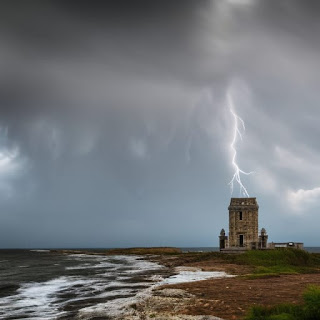Basic Meteorological Terms
Meteorological Terminology
Types of storm clouds.
Common types of storm clouds:
Cumulonimbus clouds:
These are the tall, dense clouds that are commonly associated with thunderstorms. They can reach heights of up to 60,000 feet and can produce lightning, thunder, hail, strong winds, and heavy precipitation.
Cumulus clouds:
These are the puffy, white clouds that are often seen on fair weather days. They can grow vertically into cumulonimbus clouds when conditions are right, but they typically do not produce severe weather.
Stratocumulus clouds:
These are low, lumpy clouds that often form in groups or lines. They are typically gray or white in color and can produce light precipitation.
Nimbostratus clouds:
These are low, gray clouds that often produce steady, moderate to heavy rain or snow.
Altostratus clouds: These are mid-level clouds that are often gray or blue-gray in color. They can produce light to moderate precipitation.
Cirrus clouds:
These are high-level clouds that are thin and wispy in appearance. They are often made of ice crystals and are usually white or gray in color. They do not typically produce precipitation.
Common terms.
Precipitation:
Any form of water that falls from the atmosphere and reaches the surface, including rain, snow, sleet, and hail.
Temperature:
A measure of the heat or coldness of a substance or environment.
Humidity:
The amount of water vapor present in the air.
Pressure:
The force exerted by the weight of the atmosphere on the surface of the earth.
Wind:
The movement of air from one location to another.
Cloud:
A visible mass of water droplets or ice crystals suspended in the air.
Fog:
A cloud that forms at ground level, reducing visibility.
Hurricane:
A tropical cyclone with winds of 74 mph or higher.
Tornado:
A violent, whirling windstorm characterized by a funnel-shaped cloud.
Blizzard:
A severe snowstorm with winds of 35 mph or higher and visibility of less than a quarter mile.


Comments
Post a Comment